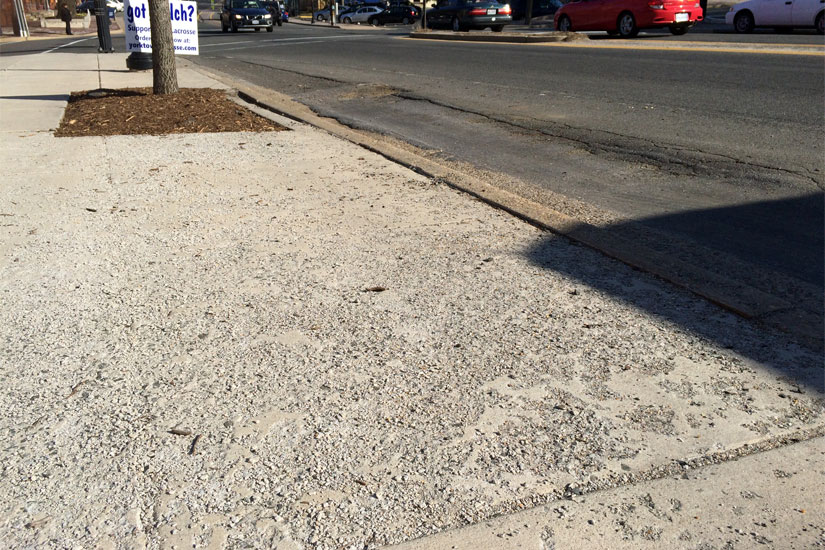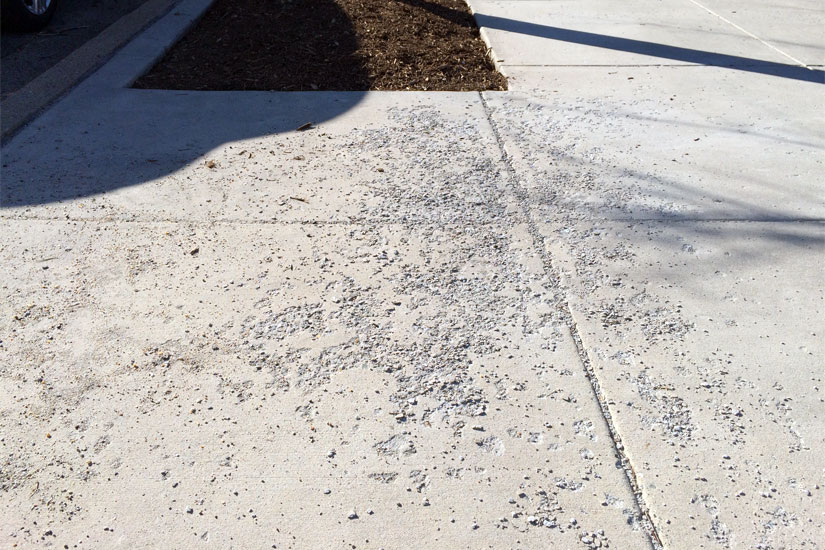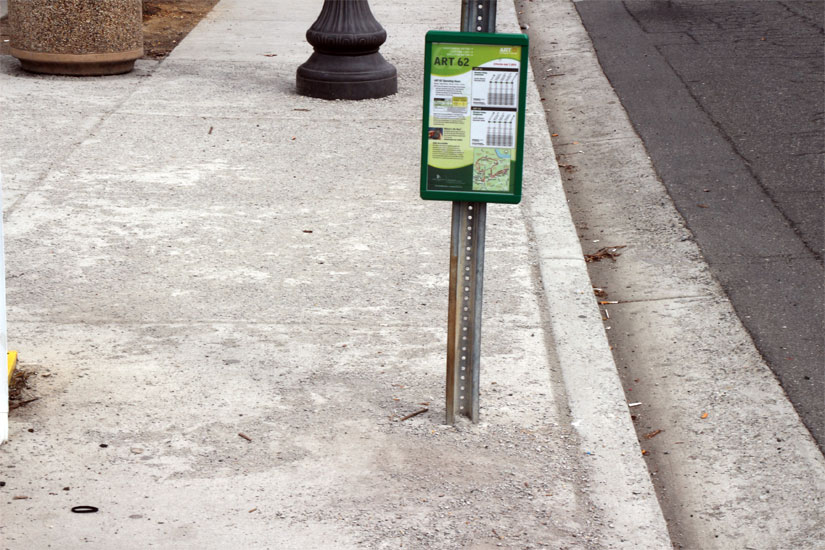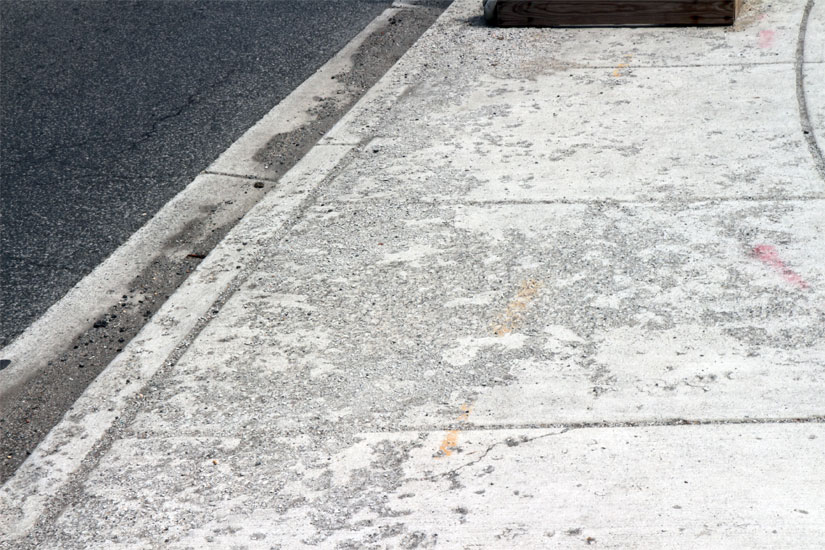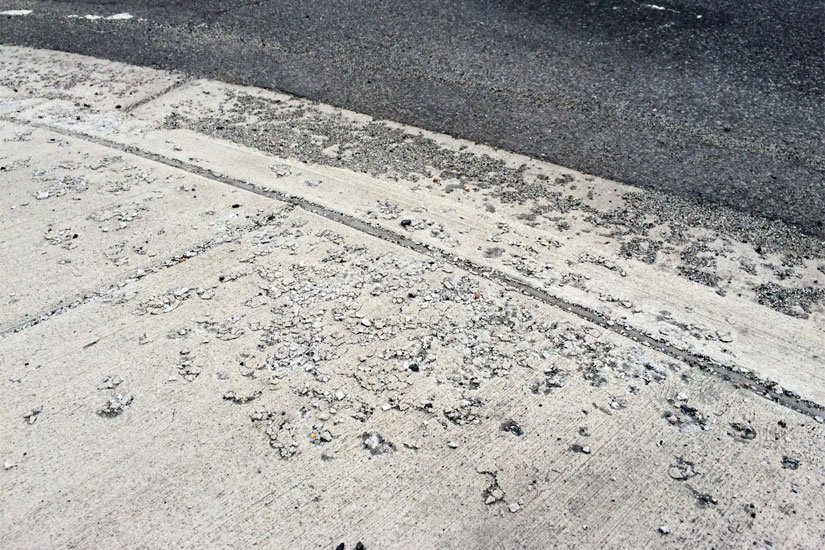(Updated at 5:00 p.m.) Many of the sidewalks built over the last two years in Arlington are already crumbling, and the county is trying to figure out why.
At least a dozen sidewalks all over the county — like the ones pictured above — appear significantly damaged, their surfaces crumbling and creating tiny pieces of debris. These are not pieces of aging infrastructure that plague the county, these are recently installed sidewalks that have worn down rapidly.
Arlington’s Department of Environmental Services oversees the sidewalks, and Engineering Bureau Chief Ramzi Awwad said DES knows about the issue and has been investigating it for “several months.” All of the sidewalks they have inspected — between six and 12, he said — were installed within the last one or two years. All of them have been built by the same specifications the county, and other surrounding jurisdictions, have used well before these issues came to the fore.
“Each location is unique with its specific properties,” Awwad said today. “There’s elevated water content in the top millimeter or two. When salt is applied to newly poured concrete, that’s when the deterioration occurs.”
Awwad said it’s not a safety issue — the damage is just to the very top level of the sidewalk — but he said the elevated water in the concrete was present during construction, not a result of excess precipitation. At this point, the county doesn’t know how the excess water got into the concrete, and doesn’t have a plan to repair it.
The specific type of deterioration occurring in Arlington’s newest sidewalks could be attributed to freezing and thawing. According to engineering training center PDHOnline, freezing and thawing can take its toll on any concrete with excess water underneath the surface. The photo used to illustrate freezing and thawing damage (on page 6 here) looks nearly identical to the issues Arlington’s new sidewalks have encountered.
According to a paper by concrete supplier Cemex, “It is not uncommon in the concrete industry for the contractor to add water to the load prior to or even during the unloading process to increase the slump and improve the workability of the concrete.” Too much water can cause the concrete to be more permeable, and therefore more susceptible to further water infiltration
Awwad said all of the sidewalks DES has inspected for deterioration were county projects completed by private contractors. Some private developers install their own sidewalks, adhering to county specifications, and none of the privately built walkways have reported this problem.
“The majority of what we’ve observed and we’re aware of has been county projects built by contractors,” Awwad said. He said different contractors have built the sections of now-deteriorating sidewalks.
Since discovering the problem, DES has instituted some changes.
“We’ve studied and implemented some best practices that will help this from occurring in the future,” he said. “That’s our first goal. In addition, as part of our investigation, we are studying repair methods that can remedy the issue.”
Awwad said the investigation should be wrapping up in a matter of weeks. He said the county investigates based on resident complaints, and the spots they have inspected so far have been brought to them by the public. The public can report crumbling sidewalks online or on Arlington’s app.
“Our residents are really our eyes and ears, particularly in capital improvement projects,” he said. “Residents are the ones who notified us, and we’re always appreciative when they do.”


